As promised, a catch-up blog with news of some upcoming events and a couple of short reports on the Centre at Deal and ‘Open Faversham’. Also, news of several people who have been involved with the Centre in the past: Dr Diane Heath has joined the Science Museum in London where she is exploring with colleagues a potential project on amulets, Dr Martin Watts will shortly have his own website and continues to teach with the OU, and Dr John Bulaitis, among other activities, will be delivering the annual Nightingale Memorial Lecture in late September.
Thinking about September and working chronologically, the first of the autumn Canterbury Historical and Archaeological Society talks will be in person at St Paul’s church, Canterbury on Wednesday 11th at 7.05pm where I’ll be exploring ‘Canterbury’s Medieval Churches: Parish and People’, non-CHAS members £3 on the door.

One of the highlights of the CKHH year is the Nightingale Memorial Lecture. This joint annual lecture organised by the Centre and Brook Rural Museum will be held at Canterbury Christ Church in the Michael Berry Lecture Theatre, Old Sessions House at 7pm on Tuesday 24 September. This will be preceded by a wine reception at 6.30pm and before the lecture we’ll present certificates to those receiving Ian Coulson Postgraduate Awards towards their studies into different aspects of Kent’s history. As noted above, this year the Nightingale Lecture will be given by Dr John Bulaitis entitled ‘Book Launch – Tales from the Tithe War’ and the CCCU Bookshop will be present with copies for sale of John’s new book on this fascinating topic. The event is free but there will be a retiring collection.
Looking to the following weekend: Saturday 28th and Sunday 29th September, the CKHH is delighted to be working with the Society of Landscape Studies to hold a weekend at Canterbury under the title ‘Sacred and Profane: the landscapes of Kent’. The conference will take place on the Saturday at St Paul’s church, Canterbury, near the Burgate and among the presenters will be Tim Tatton-Brown, Richard Eales and past and present members of CCCU staff, including among the former Dr Chris Young (see his excellent opening chapter in Maritime Kent on the county’s physical geography over time) and among the latter Dr Claire Bartram one of the Centre’s co-directors. The field trip on the Sunday will begin and end in Canterbury and includes guided visits by Keith Parfitt to Dover’s Western Heights and an Anglo-Saxon and medieval landscape at Old St Alban’s Court, Nonington. More details and booking at: https://www.landscapestudies.com/sls-annual-conference-september-2024/
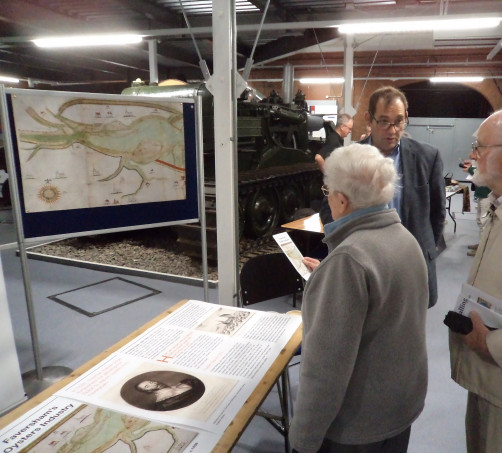
Moving very slightly into October, it will be the Medway History Showcase 2024 on Saturday, 5 October and it is even better and bigger than last year. Once again, the CKHH is delighted to be involved because this unique event, the most prominent heritage gathering in North Kent, brings together all the major heritage partners alongside others that you may not have heard of but who do fantastic work in their communities. The History Showcase idea started in 2021 as part of the Institute of Historical Research’s (IHR) centenary celebrations. Since then, it has gone from strength to strength with events in Medway at the excellent Royal Engineers Museum, Gillingham, as well as at Canterbury and Dover.
There will be eight accessible talks, including by Jason Mazzocchi, a doctoral postgraduate and member of the Centre, and these will all focus on themes pertinent to Medway’s history and heritage. In addition, the organisers are welcoming history and heritage organisations as exhibitors; so far, twenty-six have confirmed, although there is room for more! Those present will be delighted to discuss their activities, and there will be plenty of time for such discussions during the day.
This is free to pre-booked ticket holders, including free access to the beautiful Royal Engineers Museum and its café facilities. The Medway History Showcase is open to all ages, especially families, making it a great day to explore what happened in the past and what it may mean for today and the future. Tickets can be booked via https://re-museum.digitickets.co.uk/event-tickets/52565?catID=51206& and for further information or if your history or heritage organisation would like to exhibit on the day please email Pete or Jane at Medwayhs24@gmail.com
Please note this is also the day of the KAS Historic Buildings Group’s conference at Aylesford Priory on ‘Kent’s Religious Houses’. More details and how to book can be found on the KAS website at: https://www.kentarchaeology.org.uk/events/kas-historic-buildings-conference
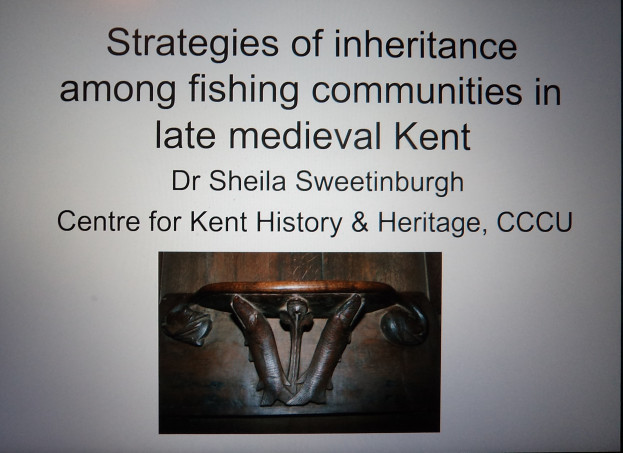
Now turning to recent events involving the CKHH, I was at Deal and District Family History Society last Tuesday (13 August) to explore the strategies of inheritance used by fishing families in late medieval Kent. Even though for the talk, I drew on evidence from maritime communities all along the coast from Rye to Milton and Sheppey, for the purposes here, I’m only going to share a small number of examples from Deal to illustrate just a few points. However, firstly I want to say that I was exceedingly impressed that this enthusiastic group even hold a meeting in August!
As part of thinking about the hierarchical nature of the industry, from the ship’s master to one of the boys, I wanted to show that even a poorer Deal fisherman might have a variety of fishing equipment. For example, Robert Kadge’s (1586) goods were appraised in total as worth less than £8. However, within this were his 11 shot nets valued at 36s8d, his 4 herring nets at 26s8d, a dole of nets and the ropes at 10s, 2 ware ropes (for use with capstans) 6s8d and 12 score hooks and lines at 4s. Such assets would not only have meant he received his share of the catch as a crewman, but by providing nets this would have enhanced his takings. Furthermore, his inventory also suggests that he was involved in a variety of different types of fishing for different fish species, including herring possibly in the North Sea as well as the coastal waters off Deal. This equally indicates that he was not only fishing during the autumn, following the herring shoals from perhaps as far north as the waters off Newcastle and more certainly those off the East Anglian coast, therefore potentially on a boat that not only took advantage of the fish market at Great Yarmouth but maybe Newcastle or Scarborough too, before in late November continuing to seek herring in the Channel and therefore landing the catch at his home port. Yet, the hooks and lines may point to his involvement in a crew that used the late autumn for cod and mullet fishing, while the shot nets were used for mackerel fishing, something that took place in late summer.
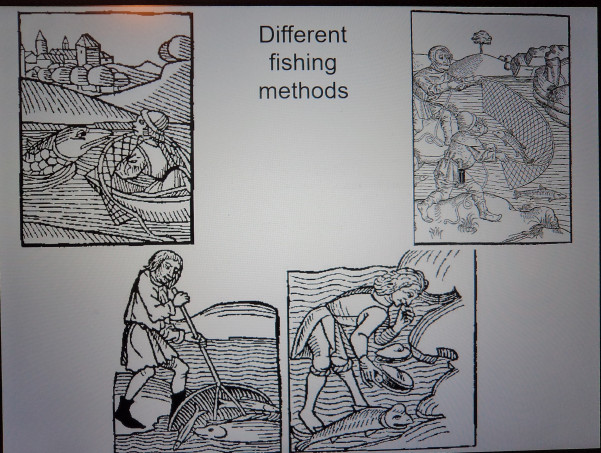
Wills are equally useful sources to highlight other aspects about how fishermen and their families sought to maintain themselves within the industry. While sons as you might expect were testators’ favoured beneficiaries, where sons were either absent or young, the fisherman’s widow was seen as a valuable means to ensure continuity. Moreover, this might also involve a young servant, as in the case of Stephen Jonson of Deal (1517) who bequeathed to Thomas his servant 4 shot nets, a sprot net and 2 lines ‘ready for the sea’ on condition that he stayed in the household for 2 years after Stephen’s death because if not he was to receive nothing but his clothing. Such an arrangement provided stability for Stephen’s widow as well as giving young Thomas the opportunity to be involved in the industry through at the very least his assets as a ‘sleeping partner’ in a fishing enterprise.
Interestingly, Deal testators seem to have made greater use of their daughters as conduits to pass on such fishing assets, albeit these assets were therefore most likely to go outside the natal family. As a final example, John Salmon in 1522 bequeathed to Agnes Whytt his daughter 2 sprot nets and to Isabel his youngest daughter a half share of herring nets, a half share of mackerel nets and 2 sprot nets. For Agnes, who may have been married already and potentially to a fisherman, a few extra nets were presumably helpful, while for her younger sister this would seem to indicate her dowry and therefore that John expected her to marry a fisherman even if that again meant his nets were no longer linked to the Salmon family by name. Looking at these strategies, as well as the fishing industry more broadly produced several questions, and the wills may have also highlighted a link between a Kentish fishing family and one from Yorkshire – a satisfactory result!
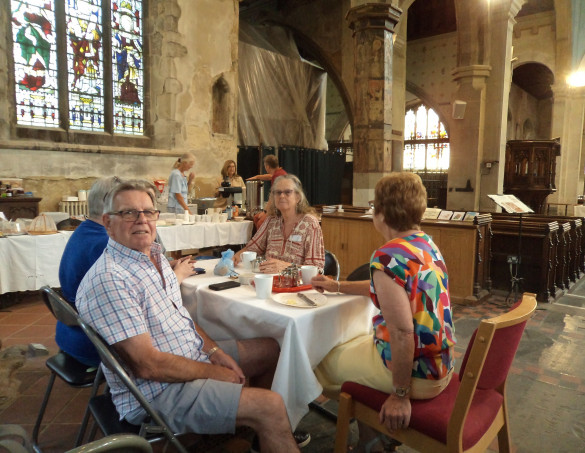
Moving to Faversham, it was good to be involved again in ‘Open Faversham’ which has a fantastic array of events, stating on Saturday 17 August and going on all week until Sunday 25th. Yesterday (Saturday 17th), I joined those in the parish church of St Mary of Charity to talk to visitors (including from west Kent such as Sevenoaks, as well as beyond the county boundary) and those from the church selling excellent refreshments – cakes recommended! about the painted pillar. If you are interested, I did this for the Kent Archaeological Society a few years ago: https://www.youtube.com/watch?v=VCpuvV4nUrc I should also like to thank the churchwarden for showing me the church silver – very interesting 17th-century flagons, and the wonderful medieval parish chest – highly reminiscent of the youngest one at St John’s hospital, Canterbury, with its Gothic arches design.
Then in the early evening it was off to the Guildhall to talk about Late Medieval Faversham, and for this thanks to Harold Goodwin for organising the talk and the AV and to those who came to the rescue when it became clear there were technical issues. Because ‘Medieval Faversham’ is a very big topic for 45 minutes, I had decided to set up a scenario where we firstly looked at the town’s earlier medieval history by my putting forward the 4 things I think people in 15th-century Faversham would have picked out to explain the crucial issues concerning the earlier period to a stranger – John White who had newly arrived in Faversham in 1435 from Gdansk. Firstly, the town’s ancient Saxon heritage as the ‘town of the smiths’ and where King Athelstan had held one of his councils. Also, the town’s medieval charters use a number of Old English terms relating to urban characteristics and it is likely people were turning up Saxon objects including coins in the fields in and around the town. This urban character is reinforced through Domesday entries, including that the town had a market. These features meant the townspeople had and continued to vigorously defend their town from all forms of outside lordship.
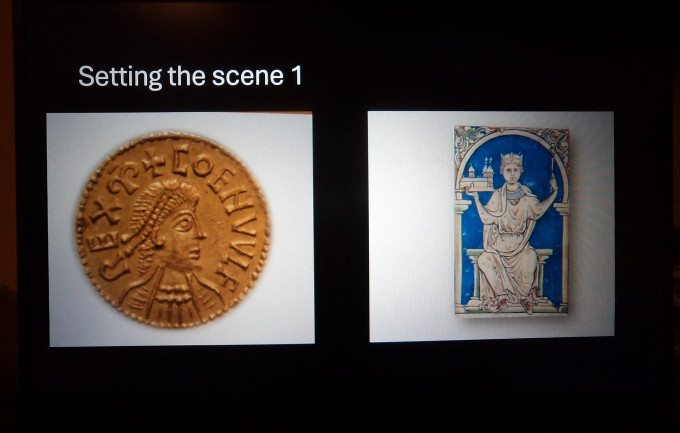
This brought me to my second point, the problems of monastic lordship by Faversham Abbey, a Cluniac foundation planted in the town in 1147 by King Stephen and his queen. For, yes, such an institution probably enhanced commerce locally, aided by grants from Henry II such as the 8-day Lammas fair, but, and it was a big but, the free and urban king’s tenants found themselves tenants of the abbot to whom they owed fealty which put severe limits on self-government, almost at a time – the 13th century – when towns more widely were flexing their independence muscles. For Faversham this might be seen as the 1258 case held in the king’s court that mentions a mayor and the earliest surviving use of the town’s seal in 1295 – the idea of communal identity and the concept of collective responsibility. And just to make life more tricky, the town’s only parish church was under the patronage of St Augustine’s Abbey at Canterbury.
The third thing I think they might have mentioned is the town’s archive of important charters. While perhaps arguably they would have pointed out the town’s copy of the 1225 version of Magna Carta acquired in 1300, I think it is more likely they would have focused on those charters relating to Faversham’s Cinque Port status under its head port of Dover, specifically Henry III’s charter of 1252. Moreover, and moving to the fourth point which follows on, the town had a custumal, the version now extant having been relatively newly written up in 1435 because Dr Justin Croft thinks that it was written at some point between c.1382 and c.1405. Like other Cinque Port custumals it makes much of the election process for the town’s civic government, but also includes copies of key charters, that of 1252 and Edward I’s charter of 1302, as well a chronicle and prophesies of the mystic St John of Bridlington. The custumal highlights literacy in the town that links to royal style officialdom such as the exchequer and other Crown departments at Westminster, as well the sophisticated mindset of people such as London’s clerks and the value placed on written record keeping.
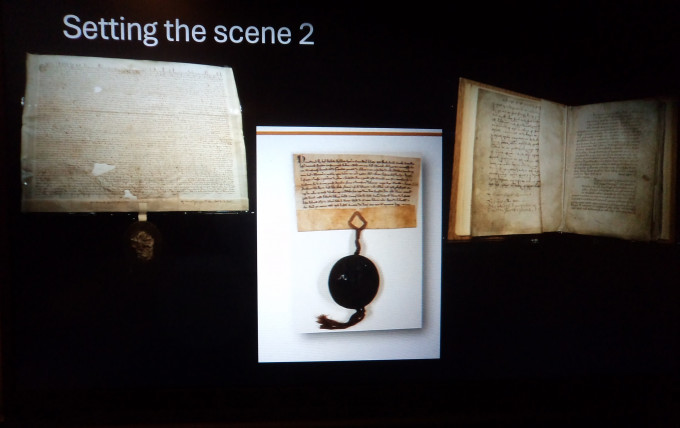
With this as the background, I moved on to consider ‘Running the late medieval town’ firstly under the heading of horn blowings and civic elections. Thereafter we investigated the various courts and the complexity of their management, due in part to the tenacity of the abbot concerning his rights of lordship within the town government. We also looked at the types of cases tried, the importance as the town (rightly) perceived of making written records, including those about transfers of property especially when they involved women as holders. We similarly considered standard weights and measures and the assize of bread and ale, the mayor as coroner and the role of and responsibility for the two town jails – the abbot’s and the town’s. This brought us on to punishments, including mutilation, the cutting off of an ear, and although not Faversham, one man during this period had lost one ear at Sandwich and the other at Dover. Raising finances for the town was the next aspect of civic governance and I finished by looking at a range of activities concerned to maintain the urban environment from nuisance cases involving the dumping of various dead animals in the street to keeping stray animals out of the churchyard.
Moving on again, we explored ‘Producers and Traders’ by first examining the range of occupations recorded in the Faversham documents and then looking at a couple of examples. One of these was Richard Long a barber with a tenement in ‘le Medill Row’, which may have included a shop. The importance of shops and markets was my second point, not least because for freeman having a shop was no problem, for non-freemen there was a licencing system, perhaps not dissimilar to Canterbury which meant they could ‘open a window’ – trade retail, if they paid what was called Fenestrange at a farthing a week. Markets were equally important, held 3 times a week and all trading had to be ‘aboveboard’ which included that if anyone was in debt then no-one was to deal with them by moving their goods for them. Equally forestalling was forbidden but as elsewhere the presence of such regulations presumably denote that such activities took place! Next stop was the ‘Troublesome Butchers’ who although an important group within the town did cause problems for the civic authorities who sought to ensure they acted responsibly by bringing the skins of slaughtered cattle and sheep to the market and the heads of boars or hogs. The baiting of bulls before slaughter was obligatory and there were regulations that restricted the seasonality of slaughtering of animals for food. Finally, we looked at the importance of the porters, how they were selected, what they were expected to do and how the act of portage was equivalent to a piece of property that a porter could sell to another.
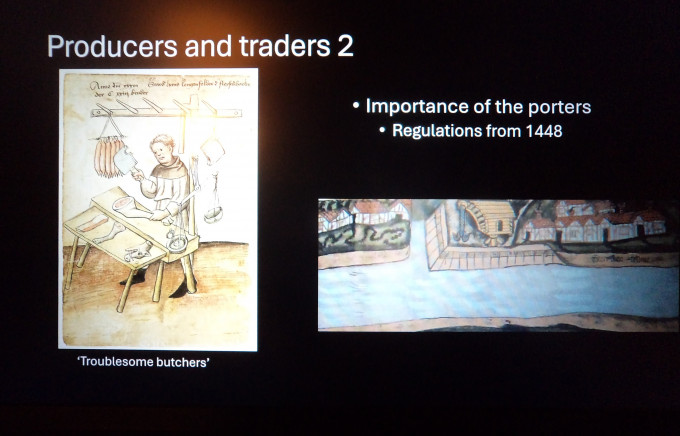
The centrality of the Christian religion in the life of late medieval Faversham was the next topic. We started with the daily morrow mass which followed the tolling of the church bell at 5am in summer and 6am in winter, this being an important mass that took place before the working day. To illustrate its devotees, I mentioned John Goodwin who expected that his widow after his death would give a silver penny each Sunday towards its maintenance. Moving on to the principal mass at the Jesus (high) altar at Faversham we considered how the liturgical year was organised and how parishioners supported such services, including those as part of Easter and the centrality of the Easter Sepulchre, such as Elizabeth Overton’s bequest of 12 laten taper dishes for it, a pious act that also facilitated commemoration. This took us on to consider both the multiplicity of devotional locations within the town’s late medieval church and what seems to have been the heightened focus on the holy family, and specifically Our Lady.
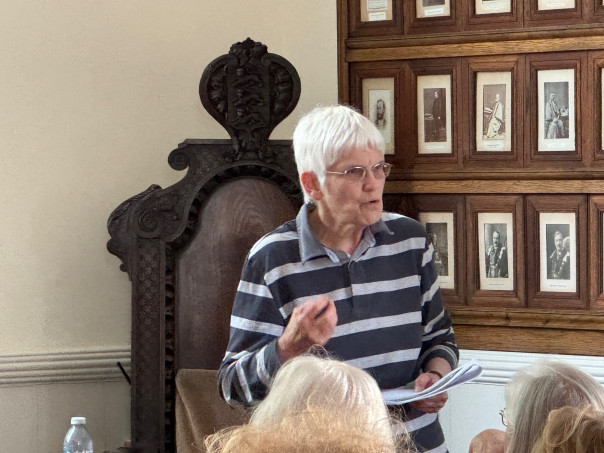
Taking a different aspect, I then considered what we know about the provision of education in the late medieval town, from what has been called elementary education provided in this case by one of the parish clerks to ensure boys in his charge could read, sing in the choir and act as servers, to the earliest known reference in the early 15th century to a grammar school. We looked at several testators who through their bequests had sought to aid able scholars to receive a university education, as well as John Cole’s free grammar school of 1526, albeit while not charging fees it would have still required financial parental support for writing equipment, a suitable gown and general maintenance while studying rather than working for a living. As at many such grammar schools there was a link to a university college in terms of oversight of the school, in this case All Souls’ College. While the provision of education in some circumstances could be envisaged as a charitable act, the final section on ‘The Church in the Town’ examined other aspects of charity, especially bequests to the anchorite or anchoress who lived in Faversham’s anchorhold, others in relation to specific life cycle events such as the churching of women after childbirth, and gifts to almshouses in the town.
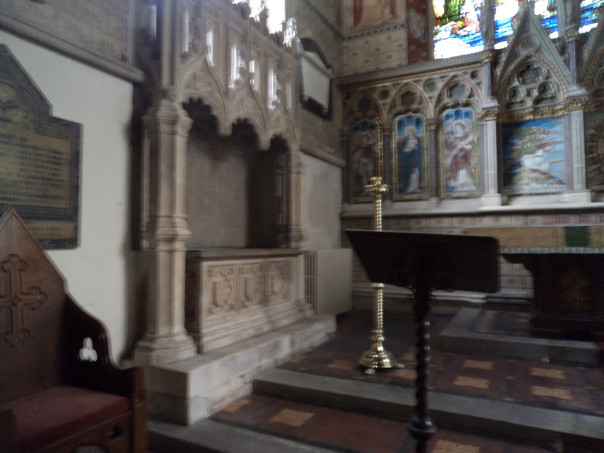
For the final section of the talk, I looked at ‘The last journey’, in the form of funeral services, burial, continuing acts of commemoration and chantries, whether temporary or permanent. Just to provide one example, Roger Harrison a local baker (1496) wanted to be buried before the image of St Saviour in Faversham church, for which he 3s4d to the high altar to secure this. Each priest at his burial who celebrated dirige and mass was to receive 6d, those who only celebrated a mass got 4d. Alms to poor people were to be provided from a seam of wheat made into halfpenny loaves. At his month’s mind (30 days after) the funeral service was in a sense repeated with the empty hearse, each priest there celebrating dirige and mass again to receive 6d, while for the poor 12 bushels of wheat were as before to be made into halfpenny loaves but at the same time there was to be 2 barrels of ale and 2 of Roger’s greatest cheeses. Moreover. during the same month he wanted a 7lb wax taper to burn at mass time and the taper to be placed on his grave, that is very close to where the daily mass was celebrated. Although he did not mention his obit (the anniversary of his death when often the funeral service was again conducted through the celebrating of the dirige and requiem mass), nor further commemorative acts, as this talk had been from ‘Cradle to Grave’ in later medieval Faversham, it offered a fitting end point and thereafter I took a considerable number of interesting and wide-ranging questions, I hope indicative that this had been a successful event for the CKHH.
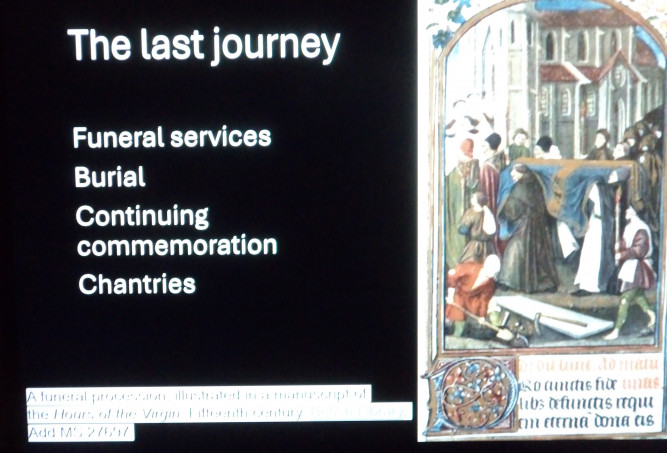
As a final point, there is a further event on Monday 19 August looking at a range of archival sources that are available for those wanting to study Faversham’s history. This will provide another chance to showcase wills, while among further sources others will highlight are inventories and probate accounts, and Doddington’s parish library.
 Centre for Kent History and Heritage
Centre for Kent History and Heritage Sheila Sweetinburgh
Sheila Sweetinburgh 1749
1749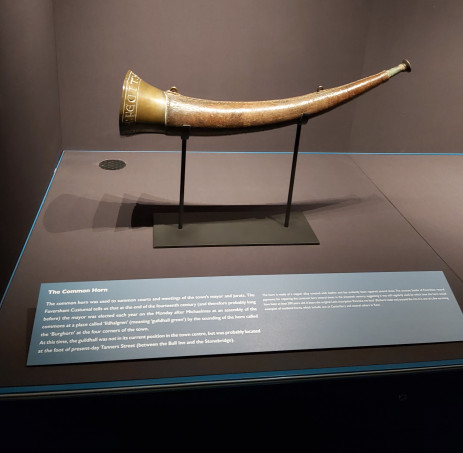



Both these talks, Sandwich and Faversham demonstrate the scope of your research: from fishing techniques to movement of herrings and other fish in the seas, to religious practises or bull baiting. I read somewhere that bull baiting was thought to tenderise the meat. Would you know of a statue or law which made bull baiting compulsary? I wonder how many pubs named ‘The Bull’ drive their name from a local market and the associated entertainment.
I also found the Sandwich will of Stephen Jonson most interesting, as an exercise to provide for your family. Thank you very much for these ‘summaries’
Glad you enjoyed it and the Faversham town book seems to suggest there was a statute but I have not looked for it. Not sure about making the meat more tender, I would think stronger tasting is far more likely.